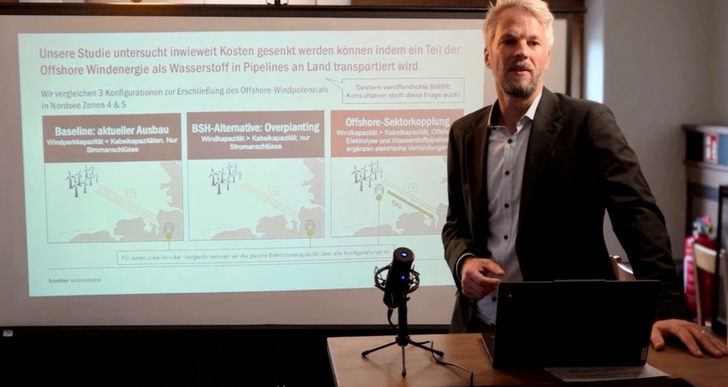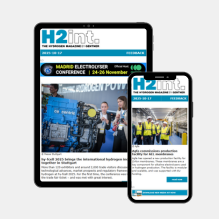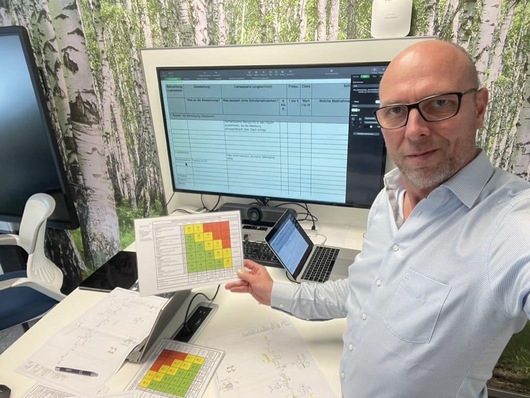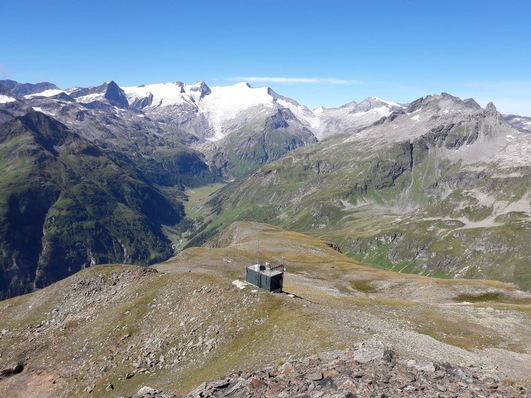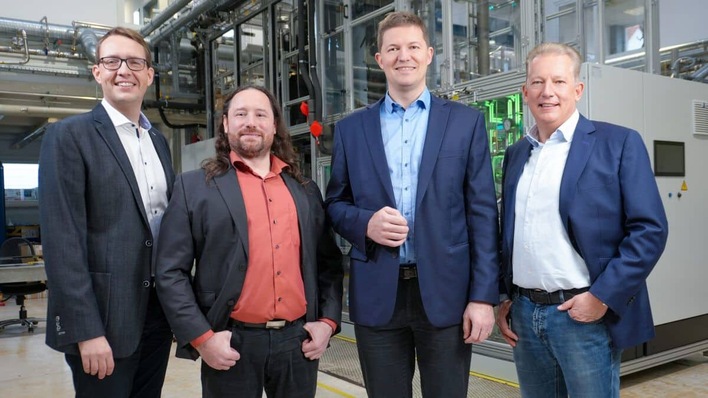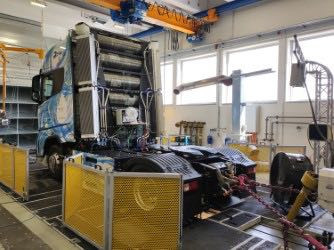A new analysis by Frontier Economics commissioned by AquaVentus shows: coupling offshore wind farms with electrolyzers and hybrid connection concepts could save up to €1.7 billion in system costs annually.
Sector-coupled offshore hydrogen production can significantly reduce system costs in the energy sector. This is the conclusion of a recent study conducted by the economic consultancy Frontier Economics on behalf of the AquaVentus initiative. According to the study, combining offshore wind power, electrolyzers, and hybrid connection concepts could lead to annual savings of up to €1.7 billion.
Combining H2 pipelines and power cables saves significant costs
The authors at Frontier Economics analyzed two scenarios with offshore wind expansion targets of 70 gigawatts (GW) and 55 GW. In both cases, the potential for savings is substantial: €1.7 billion annually in the 70 GW scenario and €0.5 billion in the 55 GW scenario. The lowest system and grid integration costs occur when power cables and hydrogen pipelines are combined.
Hybrid connection concepts make it possible to produce either electricity or hydrogen depending on market prices. This reduces curtailment losses, improves grid utilization, and increases economic efficiency. The authors estimate the efficiency gain from offshore electrolysis at around 13 percent.
Not yet permitted in Germany – but allowed in neighboring countries
In Germany, such combined connection systems are currently not permitted by law – unlike in other North Sea coastal states. AquaVentus is therefore calling for an amendment to the Wind Energy at Sea Act (WindSeeG) to enable hybrid connection concepts.
“The study shows that the real cost drivers of the hydrogen ramp-up lie in regulation,” says Jörg Singer, Chairman of AquaVentus. Robert Seehawer, Managing Director of AquaVentus, also sees a need for political action: “We need to cut red tape to unleash innovation. The study shows that this is essentially economic development at zero cost.”
Leveraging synergies through sector coupling
Frontier Economics also recommends that the offshore area SEN-1 be put out to tender as soon as possible and that flexible connection concepts be permitted from the outset. This is the only way to prevent technical specifications from driving up costs and deterring investors.
In addition, the study’s authors advocate for coordinated planning of offshore electricity and hydrogen infrastructure in the spatial development plan (Flächenentwicklungsplan, FEP) and the grid development plan (Netzentwicklungsplan, NEP) in order to leverage synergies and strategically anchor sector coupling.
The results of their calculations show: competitive prices for green hydrogen are achievable – provided that the regulatory framework is adjusted.
The AquaVentus initiative aims to produce one million tonnes of green hydrogen annually from offshore wind energy and transport it to shore via pipeline. More than 100 companies, organizations, and research institutions are working together to implement 10 GW of electrolysis capacity in the North Sea.


